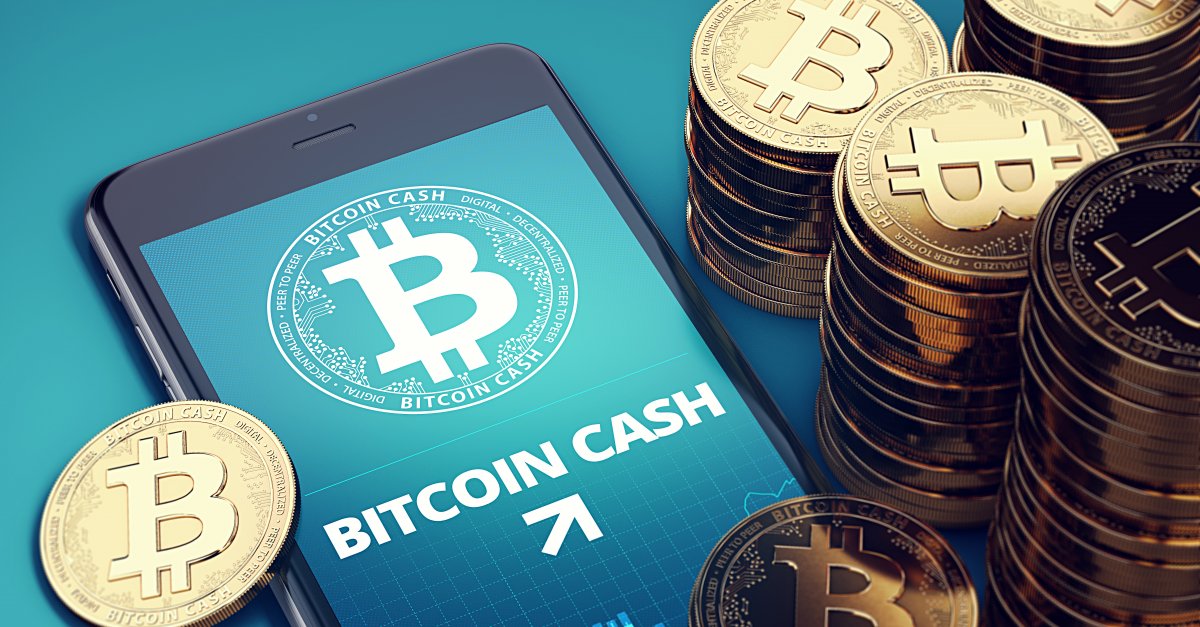Introduction
The Bitcoin Lightning Network has emerged as a game-changing solution to address the scalability issues of the Bitcoin network. As the popularity and adoption of Bitcoin continues to grow, the need for a faster and more efficient transaction system has become increasingly evident. The Lightning Network offers a promising solution to this problem by enabling virtually instant and cost-effective Bitcoin transactions.
Bitcoin, the pioneering cryptocurrency, operates on a decentralized network where transactions are recorded on the blockchain. However, due to the limited block size and increasing transaction volume, the Bitcoin network is often congested, resulting in high fees and delays in confirming transactions. The Lightning Network aims to alleviate these issues by allowing users to conduct off-chain transactions, reducing the load on the main blockchain.
By enabling the creation of payment channels between participants, the Lightning Network facilitates faster transactions that do not need to be immediately recorded on the blockchain. These payment channels allow users to conduct multiple transactions off-chain without incurring fees for each individual transaction, significantly reducing both the cost and time required for Bitcoin transactions.
Furthermore, the Lightning Network offers increased privacy by making it difficult for external parties to track and observe transactions. With most transactions conducted off-chain, the public blockchain only records the opening and closing balances of the payment channels, ensuring greater financial privacy for users.
The vision behind the Lightning Network is to make Bitcoin a viable option for day-to-day transactions, enabling micro-payments and fostering wider adoption. With its potential to scale the Bitcoin network and enhance transaction speed and cost-effectiveness, the Lightning Network has gained significant attention from the Bitcoin community, developers, and enthusiasts around the world.
In this article, we will delve deeper into the workings of the Bitcoin Lightning Network, its features, and the potential benefits and challenges it presents. By exploring its current state of development, we aim to provide a comprehensive understanding of the Lightning Network and its implications for the future of Bitcoin.
What Is the Bitcoin Lightning Network?
The Bitcoin Lightning Network is a second-layer protocol built on top of the Bitcoin blockchain. It serves as a network of payment channels that allows users to conduct fast and low-cost transactions off-chain. In simple terms, it is like an additional layer that sits on top of the Bitcoin network, enabling users to transact with each other directly without relying on the main blockchain for every transaction.
When two parties want to conduct frequent transactions with each other, they can open a payment channel on the Lightning Network. This payment channel acts as a secure and private channel for transferring Bitcoin between the participants. Once the channel is established, the parties can transact with each other as many times as they want, without the need to broadcast these transactions on the main Bitcoin network.
Transactions that occur within the payment channel are known as off-chain transactions, as they are not immediately recorded on the Bitcoin blockchain. Instead, the transactions are only committed to the blockchain when the payment channel is closed. This process significantly reduces the number of transactions that need to be processed by the blockchain, leading to faster and more cost-effective transactions.
The Lightning Network utilizes smart contracts on the Bitcoin blockchain to create and manage these payment channels. These smart contracts ensure that the transactions within the payment channel are secure and can only be executed according to predefined rules agreed upon by the participants. By leveraging the power of the Bitcoin blockchain, the Lightning Network brings an additional layer of security and trust to off-chain transactions.
One of the key advantages of the Lightning Network is its ability to enable micro-payments. Since off-chain transactions do not incur high fees, it becomes feasible to transfer very small amounts of Bitcoin. This opens up new possibilities for various use cases, such as instant micropayments for digital content or pay-per-minute services.
Overall, the Bitcoin Lightning Network serves as a scalable and efficient solution to the limitations of the Bitcoin blockchain. By allowing users to conduct fast, low-cost, and private transactions off-chain, it paves the way for widespread adoption of Bitcoin in a variety of real-world scenarios.
How Does It Work?
The Bitcoin Lightning Network operates on the principles of payment channels and smart contracts to facilitate off-chain transactions. Let’s dive into the working mechanism of this innovative network.
Payment channels are created when two participants lock a certain amount of Bitcoin into a multi-signature address on the main Bitcoin blockchain. This locked Bitcoin serves as the initial balance of the payment channel. Once established, the participants can conduct an unlimited number of transactions between themselves, updating the distribution of funds within the channel.
These transactions are conducted off-chain, meaning they are not immediately recorded on the main Bitcoin blockchain. Instead, the Lightning Network uses a series of payment channels to route the transactions securely and privately between the participating parties. This routing process allows participants to transact with others in the network, even if they don’t have a direct payment channel with each other.
To ensure the security and validity of off-chain transactions, the Lightning Network uses smart contracts. These smart contracts are programmed with rules that govern the opening, closing, and updating of payment channels. They ensure that all participants abide by the agreed-upon terms and that transactions occur as intended.
When a payment channel is closed, the final distribution of funds is recorded on the main Bitcoin blockchain. This final settlement allows participants to retrieve their respective balances, reflecting the net result of all transactions conducted within the channel. By settling on the blockchain, the Lightning Network guarantees the permanent record of the payment channel’s balance and provides the necessary security to prevent fraud.
The Lightning Network also employs a network of nodes, known as Lightning Network nodes, to facilitate the routing of transactions between participants. These nodes maintain an updated record of the payment channels available in the network and help locate the most efficient and cost-effective route for a transaction to reach its destination.
Overall, the underlying technology of the Lightning Network, comprising payment channels, smart contracts, and a network of nodes, work in synergy to enable fast, low-cost, and private transactions off the main Bitcoin blockchain. This scalable solution has the potential to revolutionize the way Bitcoin is transacted, making it suitable for everyday use and paving the way for broader adoption of cryptocurrencies.
Features of the Bitcoin Lightning Network
The Bitcoin Lightning Network offers several key features that make it a compelling solution for addressing the scalability and efficiency challenges of the Bitcoin network. Let’s explore some of its notable features:
- Instant Transactions: The Lightning Network enables near-instant transactions between participants. By conducting transactions off-chain and relying on payment channels, users can enjoy instant settlement without waiting for confirmations on the main Bitcoin blockchain. This makes Bitcoin transactions more comparable to traditional payment methods like credit cards or online payment systems.
- Low Transaction Fees: Off-chain transactions on the Lightning Network incur significantly lower fees compared to on-chain transactions. Since these transactions are not immediately recorded on the Bitcoin blockchain, participants can avoid the fees associated with blockchain congestion and limited block space. This makes micro-transactions and small-value transactions economically feasible, opening up new use cases and reducing friction in everyday transactions.
- Scalability: One of the primary objectives of the Lightning Network is to address the scalability limitations of the Bitcoin network. By conducting the majority of transactions off-chain, the Lightning Network significantly alleviates the burden on the main blockchain. This means that the Bitcoin network can potentially handle a much higher volume of transactions, making it a more practical and efficient payment system for widespread adoption.
- Bi-Directional Payment Channels: The Lightning Network allows payment channels to be bi-directional, meaning that participants can transact with each other in both directions within the same channel. This feature enables efficient and seamless payment flows between users, allowing them to send and receive funds without the need to open multiple channels with different parties.
- Improved Privacy: With transactions conducted off-chain, the Lightning Network offers enhanced privacy for Bitcoin users. Since only the opening and closing balances of payment channels are recorded on the blockchain, individual transactions are not visible to external observers. This provides users with increased financial privacy, making the Lightning Network an attractive option for those who value confidentiality in their transactions.
These features collectively contribute to positioning the Lightning Network as a powerful and practical solution for scaling the Bitcoin network, reducing transaction fees, and improving transaction speed. As the Lightning Network continues to evolve and gain widespread adoption, it has the potential to transform Bitcoin into a more efficient and accessible form of digital currency.
Benefits of Using the Bitcoin Lightning Network
The Bitcoin Lightning Network offers several compelling benefits that make it an attractive solution for users and merchants alike. Let’s explore some of the key advantages of utilizing the Lightning Network:
- Fast and Efficient Transactions: With the Lightning Network, users can enjoy almost instantaneous transactions. By conducting transactions off-chain and leveraging payment channels, participants can complete transactions without waiting for confirmations on the main Bitcoin blockchain. This makes the Lightning Network an ideal solution for applications that require quick and seamless transactions, such as point-of-sale payments or online purchases.
- Low Transaction Fees: Users of the Lightning Network can benefit from significantly lower transaction fees compared to on-chain Bitcoin transactions. By moving the majority of transactions off-chain, participants can avoid the fees associated with blockchain congestion and limited block space. This makes micro-transactions and small-value transactions much more affordable, creating opportunities for new business models and use cases.
- Scalability: The Lightning Network addresses the scalability limitations of the Bitcoin network. By conducting a significant amount of transactions off-chain, the Lightning Network relieves congestion on the main blockchain, allowing for a higher volume of transactions to be processed. This scalability makes Bitcoin a viable option for mass adoption and everyday transactions, positioning it as a competitive alternative to traditional payment systems.
- Privacy: With the Lightning Network, users can enjoy enhanced financial privacy. Since individual transactions are conducted off-chain and not immediately recorded on the blockchain, they are not publicly visible. This provides users with greater confidentiality and privacy in their transactions, surpassing the transparency of traditional on-chain transactions. Users can enjoy the benefits of decentralized digital currency without sacrificing their privacy.
- Micro-Payments: The Lightning Network opens up new possibilities for micro-payments, allowing for the transfer of very small amounts of Bitcoin. With reduced transaction fees and fast transaction times, it becomes feasible to conduct micropayments for digital content, pay-per-minute services, or micro-donations. This enables new business models and enhances the potential for monetizing digital content on a granular level.
These benefits highlight the potential of the Bitcoin Lightning Network to revolutionize the way Bitcoin is used for day-to-day transactions. By offering fast and efficient transactions, lower fees, improved scalability, enhanced privacy, and the ability to facilitate micro-payments, the Lightning Network paves the way for broader adoption of Bitcoin and further solidifies its position as a disruptive force in the financial industry.
Potential Challenges and Limitations
While the Bitcoin Lightning Network offers promising solutions to the scalability and efficiency issues of the Bitcoin network, there are still some challenges and limitations that need to be considered. Let’s explore some of them:
- Network Liquidity: For the Lightning Network to work effectively, there needs to be sufficient liquidity across the network. Liquidity refers to the availability of funds in different payment channels, ensuring that participants can find routes to transact with others. In some cases, the lack of liquidity can limit the usability of the Lightning Network and hinder its widespread adoption.
- Channel Management: The Lightning Network requires regular channel management, including the opening and closing of payment channels. Managing channels effectively can be complex and requires users to actively monitor their channels and ensure the timely closure of channels when necessary. Failure to manage channels properly can result in funds being stuck in inactive channels and hinder the overall user experience.
- Security Risks: While the Lightning Network incorporates multiple layers of security, it is not immune to potential security risks. Smart contract vulnerabilities or issues with individual nodes can pose risks to the funds locked in payment channels. Users must exercise caution and ensure that they are using reliable and up-to-date software clients and channels to mitigate these risks.
- Centralization Concerns: The Lightning Network relies on a network of nodes to facilitate transactions and route payments. As the network grows, there is a possibility of centralization, where a few nodes gain significant control and influence over the network. This potential centralization raises concerns regarding the decentralized nature of Bitcoin, and efforts should be made to ensure a well-distributed and diverse network of nodes.
- User Experience: While the Lightning Network offers faster transactions and lower fees, the user experience is still evolving. Setting up and managing payment channels requires technical knowledge and can be challenging for less tech-savvy users. Improving the user experience and providing user-friendly interfaces and tools will be crucial to drive mainstream adoption of the Lightning Network.
It is important to acknowledge these challenges and limitations as the Lightning Network continues to develop and mature. By addressing these concerns and finding solutions, the Lightning Network can become a more robust and user-friendly network that fulfills its potential as a scalable and efficient solution for Bitcoin transactions.
Current State of the Bitcoin Lightning Network
The Bitcoin Lightning Network has been steadily growing since its inception and has made significant progress in addressing the scalability and efficiency challenges of the Bitcoin network. Let’s take a look at the current state of the Lightning Network:
In terms of network capacity, the Lightning Network has experienced impressive growth. As of [current date], the total network capacity has reached [number] Bitcoin, demonstrating the increasing adoption and usage of the Lightning Network. This capacity represents the total amount of Bitcoin locked in payment channels, available for instant off-chain transactions.
The number of active payment channels and Lightning Network nodes has also continued to grow. There are currently [number] active payment channels, allowing users to transact with each other instantly. Additionally, the Lightning Network has over [number] nodes, serving as the backbone for routing transactions and facilitating connectivity across the network.
A growing number of merchants, businesses, and services have embraced the Lightning Network as a means of accepting Bitcoin payments. From online retailers to brick-and-mortar stores, the Lightning Network has enabled faster and more cost-effective transactions, offering an improved payment experience for both merchants and customers.
In addition, significant advancements have been made in terms of usability and user experience. Various wallets and applications have emerged to simplify the process of opening and managing payment channels, making the Lightning Network more accessible to a broader range of users. As the user experience continues to improve, it is expected to further encourage the adoption of the Lightning Network.
The Lightning Network development community is actively working on implementing new features and enhancements to further enhance the functionality and scalability of the network. Ongoing efforts focus on improving the security, stability, and reliability of the Lightning Network, as well as exploring potential solutions for the remaining challenges and limitations.
As with any emerging technology, the Lightning Network is still undergoing continuous development and refinement. It is important to note that while the Lightning Network has made significant progress, there is still room for growth and further optimization. However, the current state of the Lightning Network paints a promising picture, indicating that it is on a trajectory towards becoming a more mature and widely adopted payment solution for Bitcoin.
Conclusion
The Bitcoin Lightning Network is an innovative solution that addresses the scalability and efficiency challenges of the Bitcoin network. By enabling fast and low-cost off-chain transactions, the Lightning Network offers a promising alternative to traditional on-chain transactions, making Bitcoin a more viable option for everyday use.
With features such as instant transactions, low fees, scalability, improved privacy, and the ability to facilitate micro-payments, the Lightning Network has the potential to revolutionize the way we transact with Bitcoin. It opens up new possibilities for various use cases, including point-of-sale payments, online purchases, micropayments, and more.
While there are challenges and limitations to address, such as network liquidity, channel management, security risks, centralization concerns, and user experience, the Lightning Network continues to evolve. The growing network capacity, number of payment channels, nodes, and merchant adoption demonstrate the progress and increasing adoption of the Lightning Network.
The current state of the Lightning Network reflects a positive trajectory, with continuous development and refinement by the community. As usability and user experience improve, and solutions are found for the remaining challenges, the Lightning Network is positioned to become a more mature and widely adopted payment solution for Bitcoin.
In conclusion, the Bitcoin Lightning Network presents an exciting opportunity to enhance the scalability and efficiency of the Bitcoin network. With its potential to revolutionize Bitcoin transactions and foster wider adoption, the Lightning Network represents a significant step towards realizing the full potential of cryptocurrencies in everyday transactions.

























